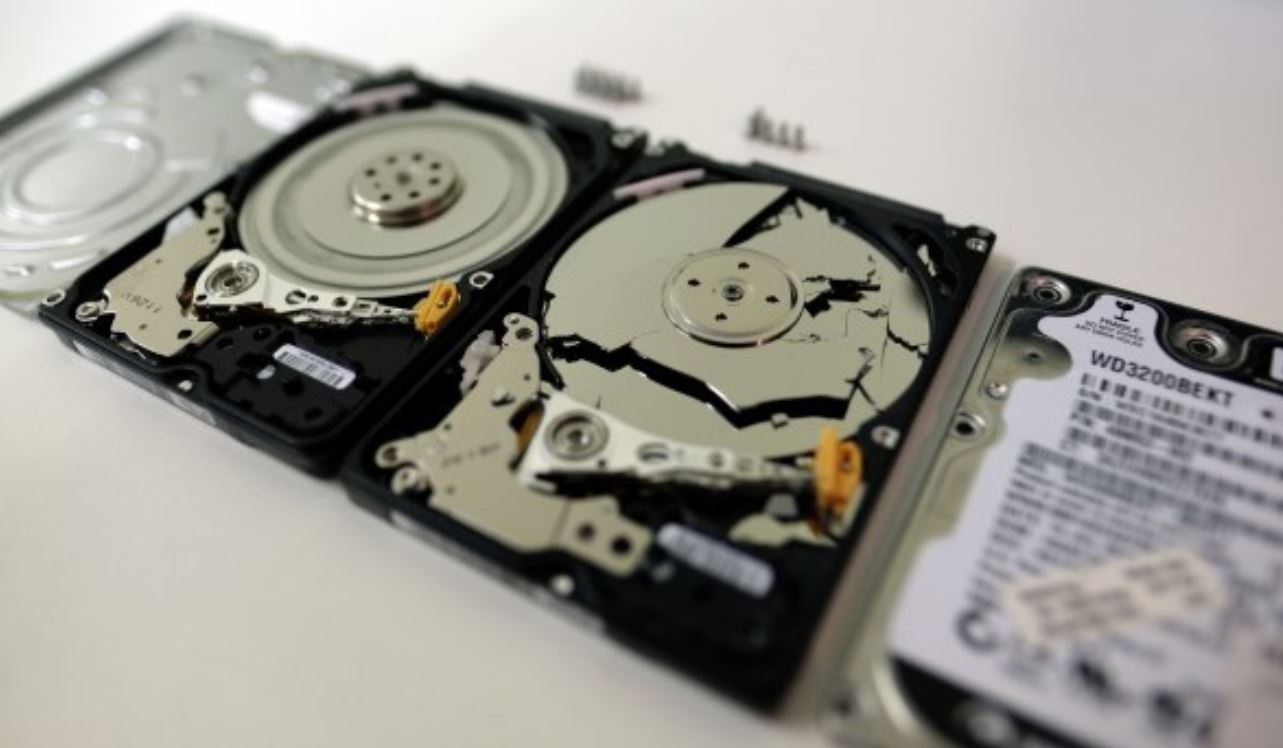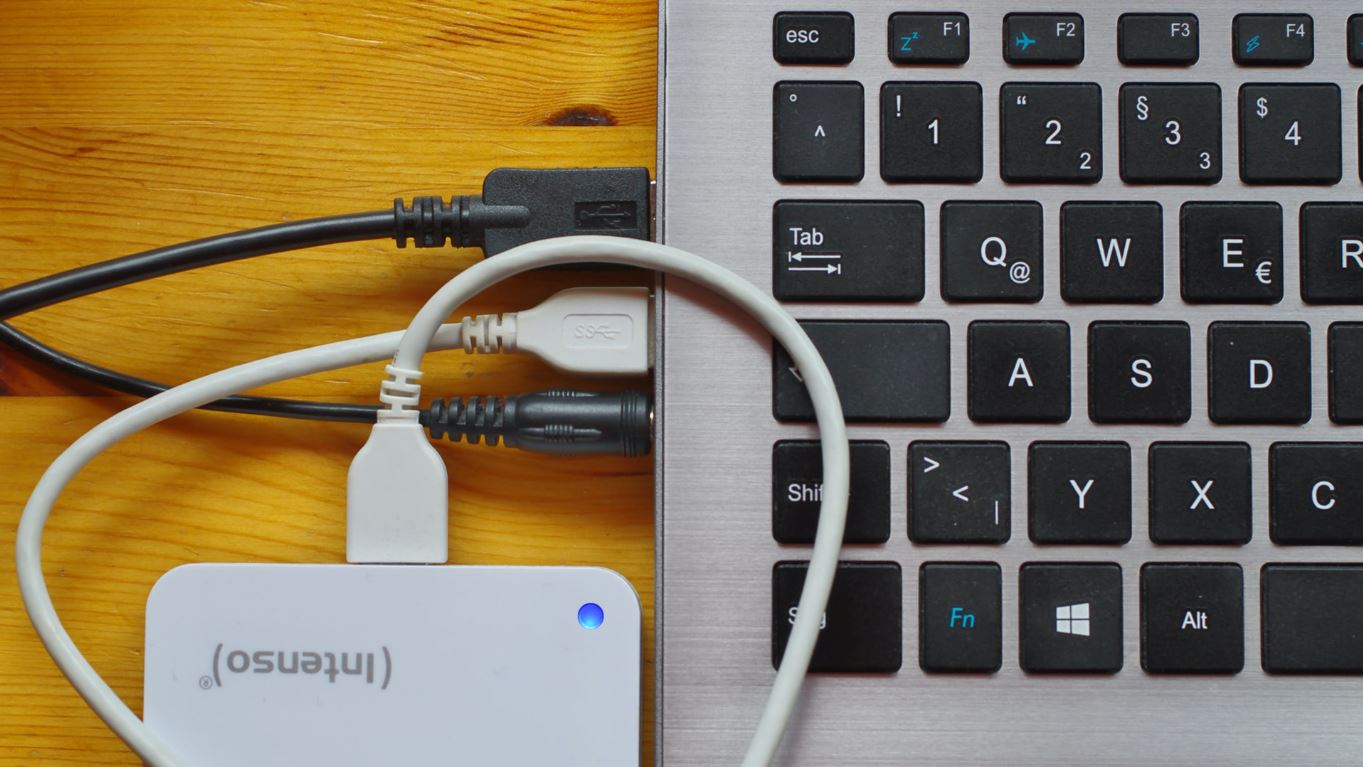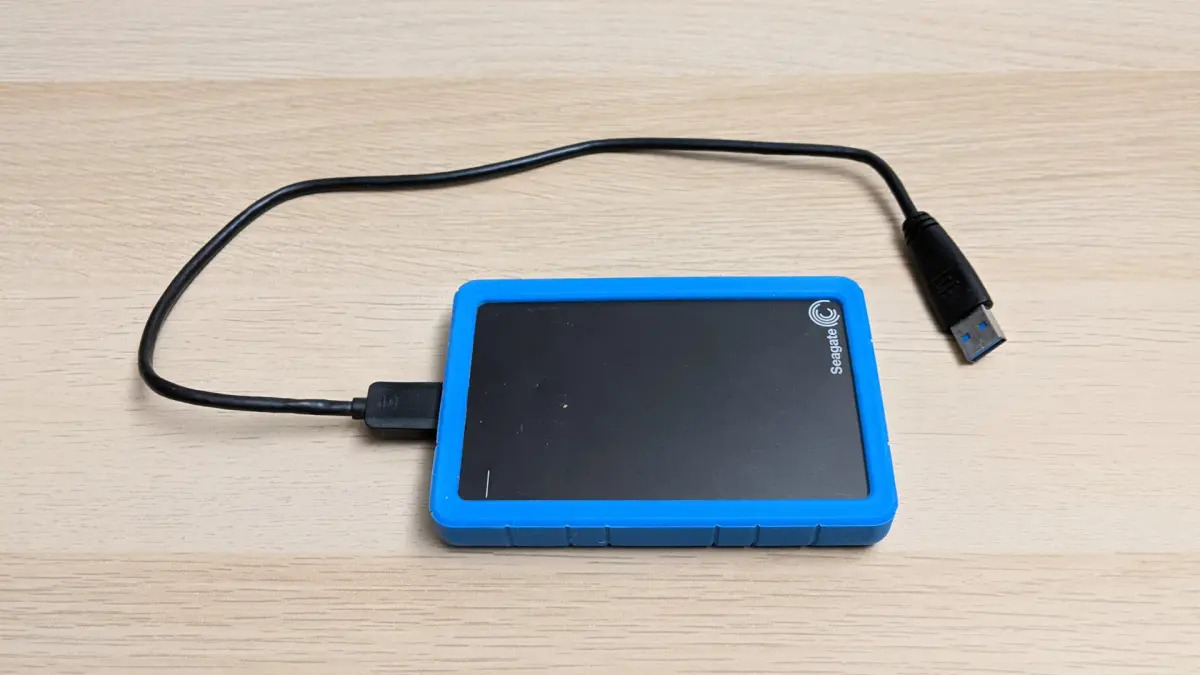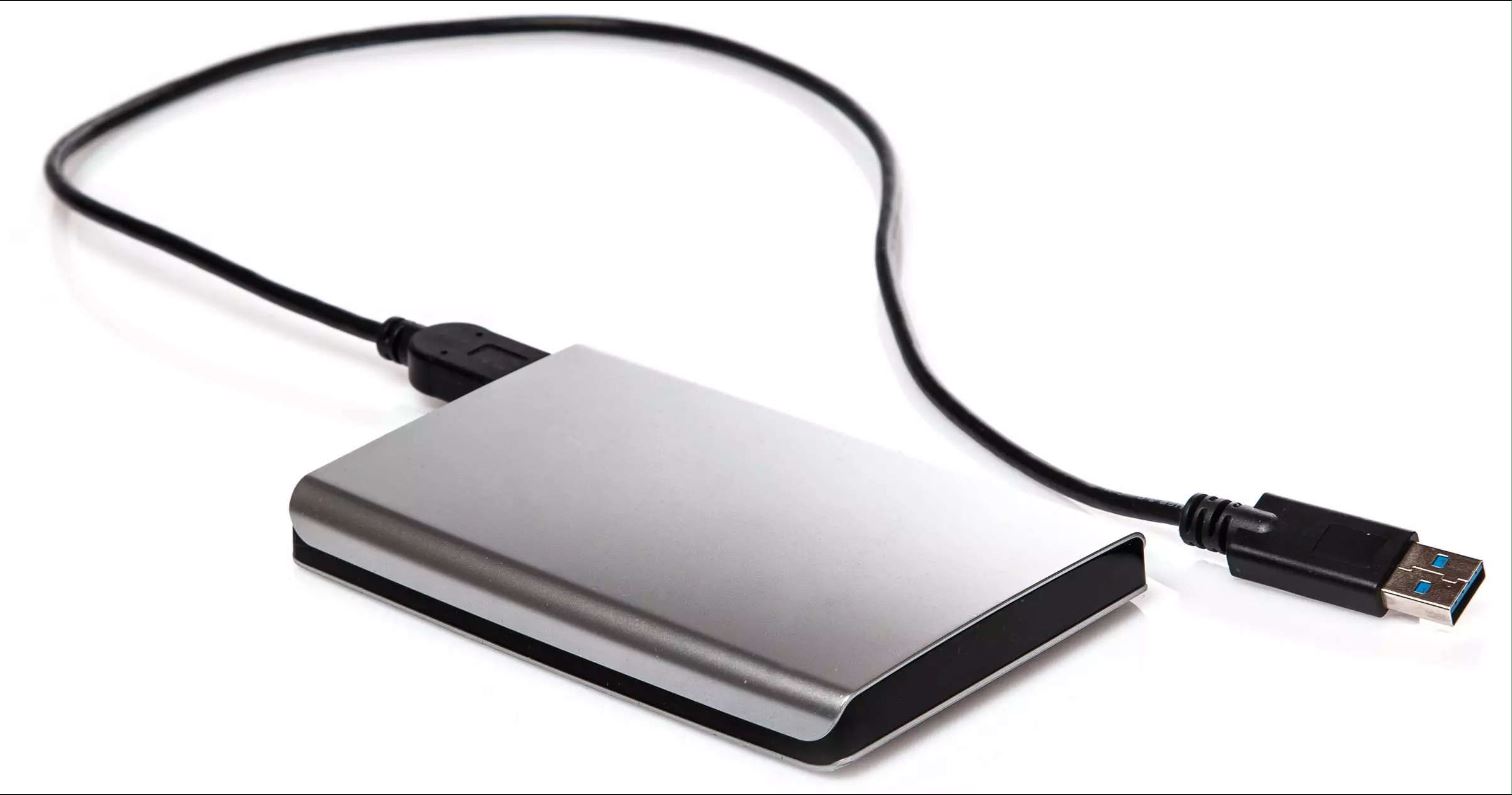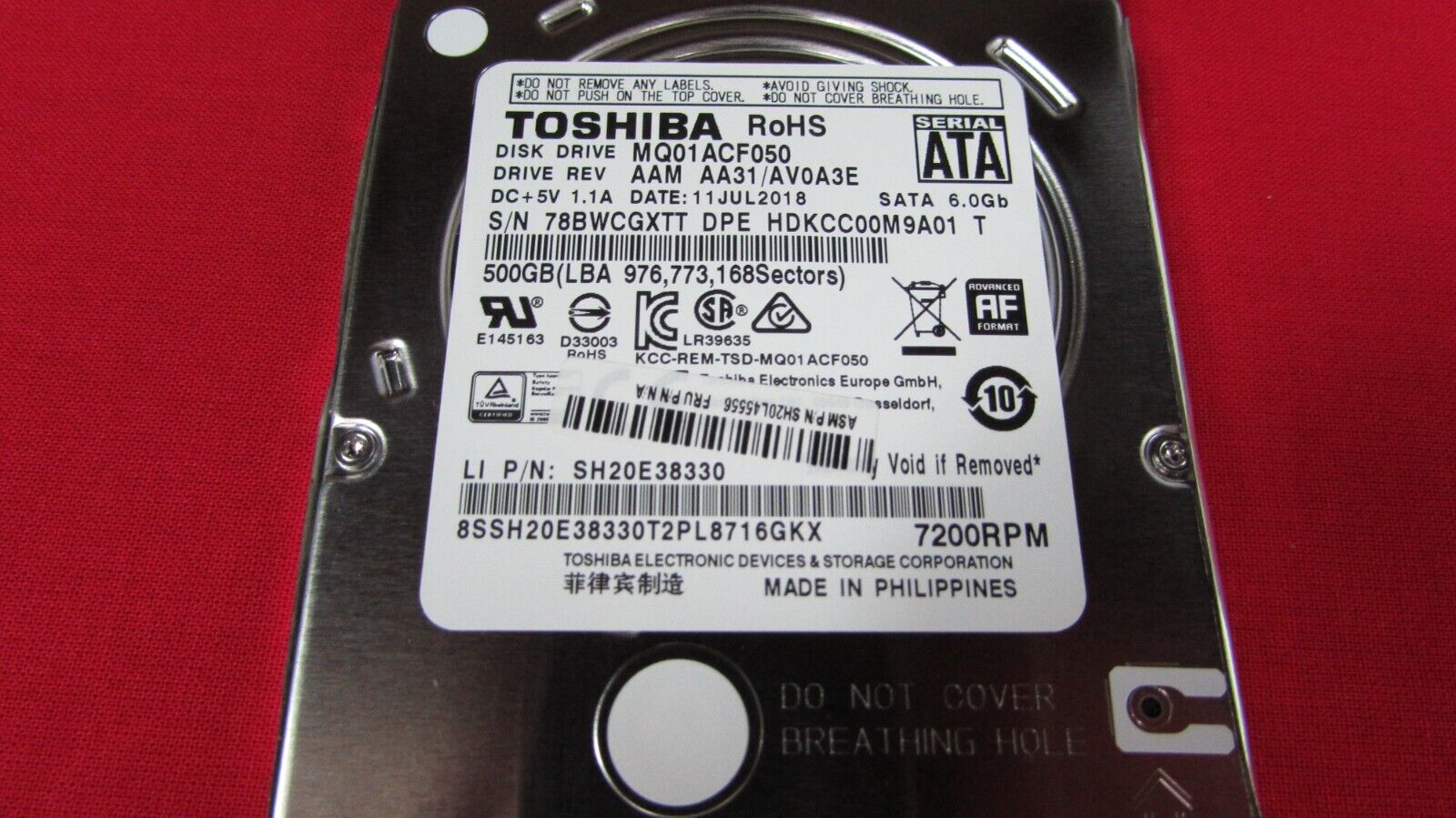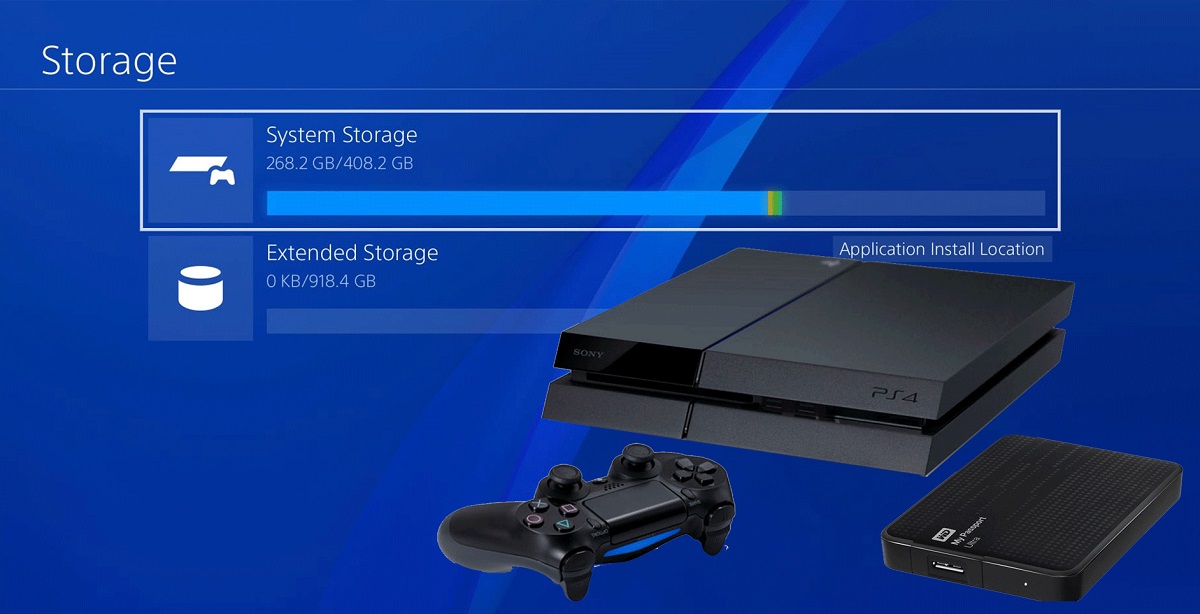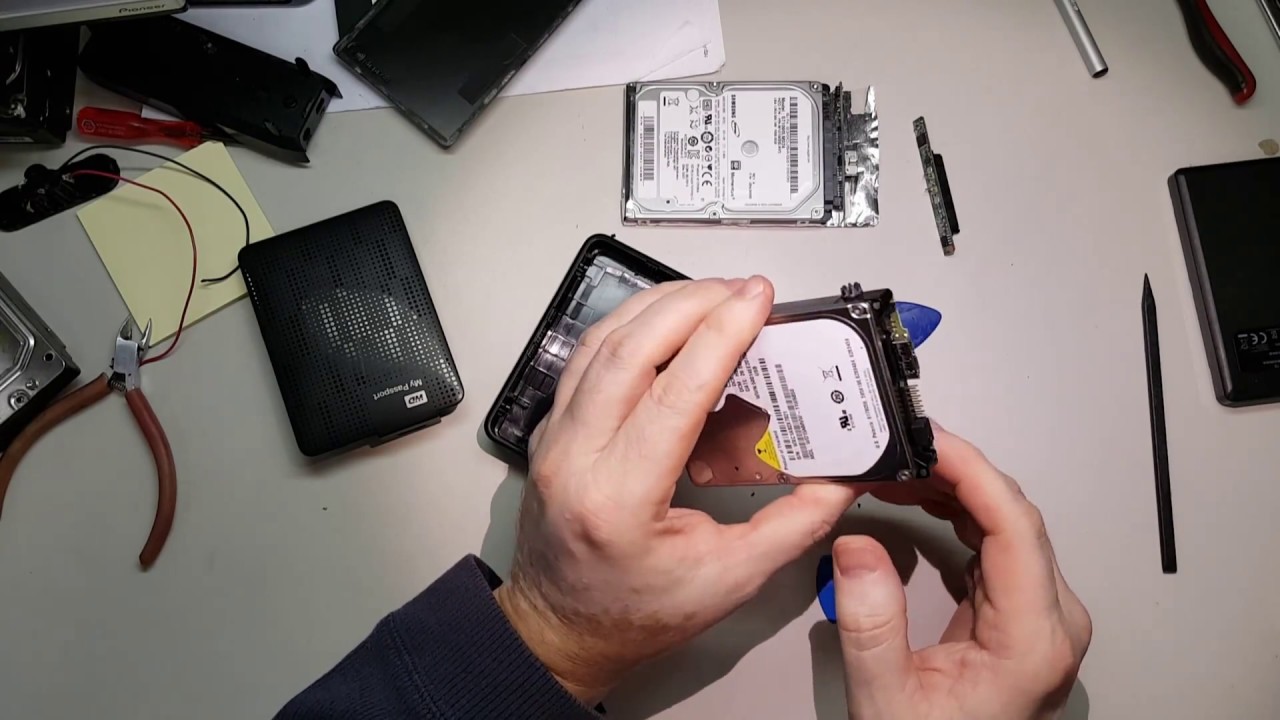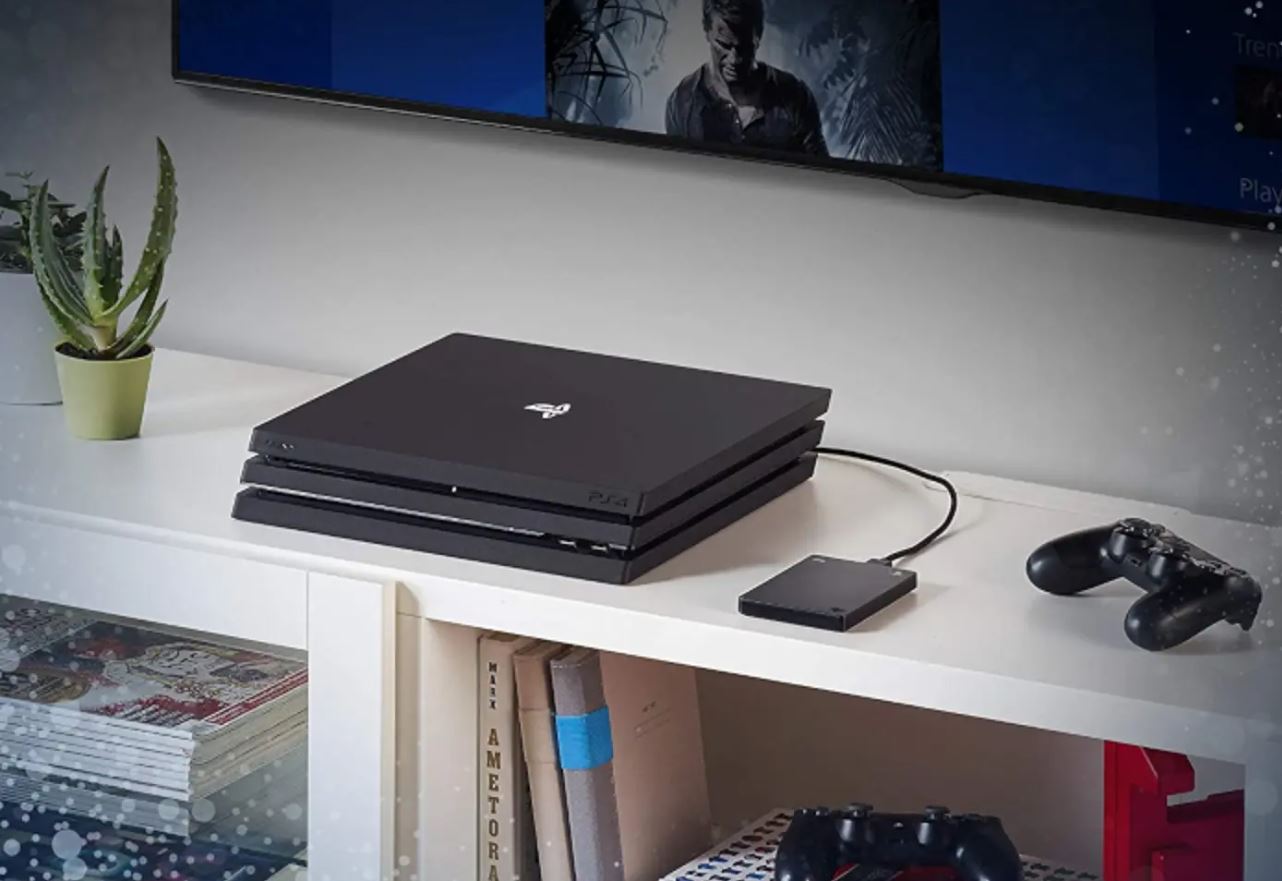Signs of a Damaged External Hard Drive
An external hard drive is a valuable device for storing and backing up your important files. However, like any other technology, it is prone to damage over time. Recognizing the signs of a damaged external hard drive is crucial to prevent data loss and address the issue promptly. Here are some common indicators that your external hard drive may be experiencing problems:
- Strange Noises: If you hear clicking, grinding, or buzzing sounds coming from your external hard drive, it could be a sign of a mechanical failure. These noises indicate that the internal components of the drive are malfunctioning. It is important to immediately stop using the drive and seek professional assistance to prevent further damage or data loss.
- Slow Transfer Speeds: If the transfer speeds of your external hard drive have significantly decreased, it could be a sign of disk fragmentation, file system errors, or physical damage. Sluggish transfer speeds indicate that the drive is struggling to read or write data efficiently, which could lead to data corruption or loss.
- Frequent Error Messages: If you consistently encounter error messages when accessing files or folders on your external hard drive, it could be an indication of file system errors, bad sectors, or file corruption. These errors may prevent you from accessing or modifying your data properly.
- Unresponsive or Inaccessible Files: If you are unable to open or access files stored on your external hard drive, it could indicate data corruption or a failing drive. This can be frustrating, especially if you have important documents, photos, or videos stored on the drive.
- Sudden Crashes or Unexpected Shutdowns: If your computer crashes or shuts down unexpectedly while accessing files on your external hard drive, it could be a sign of a failing drive or an issue with the file system. These sudden crashes can lead to data loss and system instability.
- Overheating: If your external hard drive feels unusually hot to the touch during normal use, it could be a sign of overheating. Excessive heat can cause damage to the internal components of the drive, leading to data loss or complete failure.
- Physical Damage or Visible Wear and Tear: Scratches, dents, or other physical damage on your external hard drive can indicate that it has been subjected to rough handling or accidental drops. These physical damages can affect the performance and reliability of the drive.
- Disk Errors and Bad Sectors: Running disk error checking tools or disk utility software may reveal the presence of disk errors or bad sectors on your external hard drive. These errors can indicate issues with the drive’s hardware or file system, which can lead to data corruption or loss if not addressed promptly.
- Corrupted or Missing Data: If you notice that files or folders on your external hard drive are corrupted, missing, or have changed names or file extensions unexpectedly, it could indicate data corruption. This can be caused by various factors, such as power outages, improper ejection of the drive, or virus attacks.
- Inability to Mount or Recognize the Drive: If your computer fails to detect or recognize your external hard drive, it could be due to a connection issue, driver problems, or a malfunctioning drive. In such cases, try using a different USB port, updating drivers, or connecting the drive to another computer to determine if the issue lies with the drive itself.
Being aware of these signs can help you take appropriate action to prevent further damage and potential data loss. If you suspect that your external hard drive is damaged, it is recommended to seek professional assistance or contact the manufacturer for guidance on how to proceed.
Strange Noises
One of the most apparent signs that your external hard drive may be damaged is the presence of strange noises. When a normally functioning drive starts making unusual clicking, grinding, or buzzing sounds, it indicates a mechanical failure or other internal component malfunction.
These noises can be alarming and are often a clear indication that something is wrong with your external hard drive. The clicking sound, for example, may be caused by a misalignment of the read/write heads or a problem with the actuator arm. Grinding noises might indicate a failing motor or issues with the platters. Buzzing or whirring sounds could be an indicator of a faulty fan or an overheating drive.
It is essential not to ignore these strange noises and take immediate action. Continuing to use a drive that is producing unusual sounds can lead to further damage and potentially result in permanent data loss. If you suspect that your external hard drive is making any peculiar noises, follow these steps:
- Stop using the drive: As soon as you notice any strange noises, immediately discontinue using the external hard drive. Continued use can exacerbate the problem and increase the risk of irreversible damage.
- Disconnect the drive: Safely disconnect the external hard drive from your computer or any other device it is connected to. This will prevent any further interaction with the damaged drive and reduce the chances of causing additional harm.
- Consult a professional: Seek professional assistance from a data recovery specialist or contact the manufacturer of the external hard drive. They have the expertise and necessary tools to diagnose the issue and provide appropriate solutions.
- Do not attempt DIY repairs: It is crucial to refrain from attempting any DIY repairs unless you have specialized knowledge and experience. Taking apart the drive or trying to fix it yourself can lead to further damage and void any warranty if applicable.
- Back up your data: If possible, create a backup of the data stored on the external hard drive before seeking professional help. This ensures that your valuable files are safe, even if the drive cannot be repaired.
Remember, strange noises coming from your external hard drive are not normal and should not be ignored. By taking immediate action and consulting professionals, you can increase the chances of resolving the issue and potentially recovering your data.
Slow Transfer Speeds
Another indicator of a damaged external hard drive is a significant decrease in transfer speeds. If you notice that the time it takes to copy or transfer files to and from the drive has slowed down noticeably, it could be a sign of various underlying issues.
Slow transfer speeds can be caused by multiple factors, including disk fragmentation, file system errors, or physical damage to the drive. When the drive’s internal components are compromised, it can result in inefficient data read and write processes, leading to slower performance.
If you suspect that your external hard drive is experiencing slow transfer speeds, here are some steps you can take to troubleshoot the issue:
- Check for disk fragmentation: Fragmented files on the external hard drive can prolong data access times and slow down transfer speeds. Use disk optimization tools to defragment the drive and improve performance.
- Scan for file system errors: File system errors can impact the drive’s performance and lead to slow transfer speeds. Run a disk check or use disk utility software to scan for and repair any file system issues.
- Assess the drive’s connection: Make sure that the drive is properly connected to your computer or device. A loose or faulty connection can result in reduced transfer speeds. Try using a different USB port or cable to rule out connection-related issues.
- Test the drive on another device: Connect the external hard drive to a different computer or device to determine if the slow transfer speeds persist. This can help identify whether the issue lies with the drive or the original device.
- Monitor the drive’s temperature: Overheating can cause a decrease in performance. Ensure that the external hard drive is adequately ventilated and check if it feels excessively hot to the touch during use. If overheating is a concern, consider using a cooling pad or fan to dissipate heat.
- Back up valuable data: Before attempting any troubleshooting steps, it’s wise to create a backup of the important files stored on the external hard drive. This will prevent potential data loss in case the drive’s condition worsens during the process.
If none of these steps resolve the issue and the slow transfer speeds persist, it may indicate a more significant problem with the drive’s hardware. In such cases, it is recommended to seek professional assistance or contact the manufacturer for further guidance on how to proceed.
Remember, slow transfer speeds can be an early warning sign of a damaged external hard drive. By addressing the issue promptly, you can minimize the risk of data loss and potentially save your valuable files.
Frequent Error Messages
If you find yourself frequently encountering error messages when accessing files or folders on your external hard drive, it could be a clear indication that there are underlying issues with the drive. These error messages can manifest in various forms, such as “file not found,” “disk is corrupted,” or “access denied.”
Frequent error messages can be caused by several factors, including file system errors, bad sectors on the drive, or file corruption. These issues can prevent you from accessing, modifying, or saving files on the external hard drive, disrupting your workflow and potentially leading to data loss.
If you are experiencing frequent error messages with your external hard drive, here are some steps you can take to address the issue:
- Run disk repair tools: Utilize disk repair tools or disk utility software to scan and repair any file system errors present on the external hard drive. This process can help resolve issues that may be causing the error messages.
- Perform error checking: Use the built-in error checking tool provided by your operating system to scan the external hard drive for errors and attempt to fix them. This tool can identify and repair logical errors within the file system.
- Check for bad sectors: Run a disk surface scan to identify any bad sectors on the drive. Bad sectors can result in data corruption and file read/write errors. If your drive has a significant number of bad sectors, it may be necessary to replace it.
- Verify file integrity: If specific files or folders are consistently generating error messages, try verifying their integrity by comparing them to backups or copies stored in other locations. This can help determine if the issue is isolated to certain files or if it is a widespread problem.
- Restore from backups: If you have backups of the files stored on the external hard drive, consider restoring the affected files from those backups. This can help mitigate the impact of any file corruption or loss caused by the error messages.
- Consult a professional: If you have tried the above steps and are still encountering frequent error messages, it may be necessary to seek professional assistance. Data recovery specialists can employ advanced techniques to recover data from a damaged external hard drive and provide guidance on further steps.
Remember, frequent error messages with your external hard drive should not be ignored. Addressing these issues promptly can help prevent further data loss and ensure the integrity of your important files.
Unresponsive or Inaccessible Files
One of the distressing signs of a damaged external hard drive is the inability to open or access files stored on it. If you find that files or folders on your external hard drive are unresponsive or completely inaccessible, it could be an indication of underlying issues that require attention.
When files become unresponsive or inaccessible, it may be due to data corruption, a failing drive, or errors within the file system. These problems can prevent you from viewing, modifying, or copying the files, causing frustration and potential data loss.
If you are encountering unresponsive or inaccessible files on your external hard drive, here are some steps you can take to address the issue:
- Restart your computer: Sometimes, a simple restart can resolve temporary issues and restore access to the files on your external hard drive. Restart your computer and try accessing the files again to see if the problem persists.
- Check the file system: Use disk utility software or the built-in file system checker provided by your operating system to scan and repair any errors or inconsistencies within the file system of the external hard drive. This process can help recover files that may have become corrupted or are not properly indexed.
- Use data recovery software: If the files on your external hard drive are still inaccessible, consider using data recovery software specifically designed for damaged drives. These tools can scan the drive for recoverable files and attempt to retrieve them, even in the case of severe corruption or formatting issues.
- Consult a data recovery specialist: If the above steps do not resolve the issue or if the files on your external hard drive hold significant importance, it is recommended to seek the assistance of a professional data recovery specialist. These experts have advanced tools and techniques to recover data from damaged drives and can provide guidance on the best course of action.
- Prevent further damage: To minimize the risk of further damage to your external hard drive, avoid repeatedly attempting to access or modify the files. Continued use of a damaged drive can worsen the problem and potentially result in permanent data loss.
- Create regular backups: Establish a habit of regularly backing up the files on your external hard drive to prevent data loss in the future. This ensures that even if the drive becomes completely unresponsive, you still have copies of your important files.
Remember, encountering unresponsive or inaccessible files on your external hard drive requires prompt attention. By taking appropriate steps and seeking professional guidance if necessary, you can increase the chances of recovering your files and minimizing data loss.
Sudden Crashes or Unexpected Shutdowns
If your computer crashes or shuts down unexpectedly while accessing files on your external hard drive, it is a telltale sign of a potential issue with the drive. Sudden crashes or unexpected shutdowns can be disruptive and indicate underlying problems that need attention.
There are several reasons why your external hard drive might cause your computer to crash or shut down unexpectedly:
- Firmware or driver issues: Outdated firmware or drivers can lead to compatibility problems between the external hard drive and your computer’s operating system. These issues can result in system crashes or sudden shutdowns when accessing the drive.
- Power supply problems: Insufficient power supply to the external hard drive can cause it to malfunction and lead to system crashes or shutdowns. Ensure that the drive is connected to a stable power source and consider using a powered USB hub if needed.
- Overheating: An overheating external hard drive can cause the system to crash or shut down to prevent further damage. Make sure the drive is placed on a flat surface with good ventilation and check if it feels excessively hot during use.
- Physical damage: If the external hard drive has suffered physical damage or endured a fall, it may result in mechanical failures that cause system crashes or sudden shutdowns. In such cases, professional assistance may be required to recover data or repair the drive.
- File system errors or corruption: File system errors or corruption on the external hard drive can lead to system instability, crashing, or unexpected shutdowns. Running disk repair tools or using disk utility software can help identify and resolve these issues.
If you experience sudden crashes or unexpected shutdowns while using your external hard drive, here are some steps to help address the problem:
- Update firmware and drivers: Check the manufacturer’s website for any available firmware or driver updates for your external hard drive. Keeping the drive’s software up to date can resolve compatibility issues and reduce the chances of system crashes.
- Ensure sufficient power supply: Make sure the external hard drive is connected to an appropriate power source. Using a dedicated power outlet or a powered USB hub can provide a stable power supply and prevent power-related malfunctions.
- Monitor drive temperature: Keep an eye on the temperature of the external hard drive during use. If it feels excessively hot, ensure proper ventilation and consider using cooling pads or fans to prevent overheating.
- Run disk repair and recovery tools: Use disk repair tools or disk utility software to scan and repair any file system errors or corruption on the external hard drive. These tools can help stabilize the drive and reduce the occurrence of system crashes.
- Consult a professional: If the crashes or unexpected shutdowns persist after taking the above steps, it may be necessary to consult a professional data recovery specialist or contact the manufacturer for further assistance. They can evaluate the drive’s condition and provide appropriate solutions.
Remember, sudden crashes or unexpected shutdowns while using your external hard drive should not be ignored. By addressing the underlying issues promptly, you can help prevent data loss and maintain the stability and functionality of both the drive and your computer.
Overheating
Overheating is a significant concern when it comes to the health and performance of your external hard drive. External hard drives are designed to operate within a certain temperature range, and excessive heat can negatively impact their functionality and potentially lead to data loss.
There are a few common reasons why an external hard drive might overheat:
- Inadequate ventilation: If your external hard drive does not have proper ventilation or is placed in an enclosed space, it can heat up quickly. Over time, this can cause the internal components to become damaged and lead to performance issues or failure.
- Extended periods of use: Continuous and prolonged use of the external hard drive, especially for resource-intensive tasks such as transferring large files or running disk-intensive programs, can generate excessive heat. This can strain the drive’s components and increase the risk of overheating.
- Faulty cooling mechanism: In some cases, a malfunctioning cooling mechanism, such as a faulty fan or blocked cooling vents, can prevent proper heat dissipation from the external hard drive. This can cause the drive to heat up rapidly and potentially lead to overheating.
- Environmental factors: High ambient temperatures or operating the external hard drive in hot environments can contribute to overheating. This is particularly true if the drive is not designed to withstand extreme temperature conditions.
Recognizing and addressing overheating issues with your external hard drive is vital in order to maintain its performance and prevent potential damage. Here are some steps you can take to mitigate overheating:
- Ensure proper ventilation: Make sure that your external hard drive has sufficient space around it to allow for proper airflow. Avoid placing it on surfaces that can block ventilation, such as soft fabrics or blankets.
- Use cooling pads or fans: Consider using cooling pads or fans specifically designed for external hard drives to help dissipate heat more effectively. These accessories can help keep the drive’s temperature within a safe range, especially during prolonged or intensive usage.
- Monitor the drive’s temperature: Use monitoring software or the built-in temperature monitoring tools provided by the drive’s manufacturer to keep an eye on the drive’s temperature. If the drive consistently reaches high temperatures, it may be an indication of a cooling issue that needs to be addressed.
- Take breaks during extended use: If you plan on using the external hard drive for extended periods, consider taking breaks to allow the drive to cool down. This can help prevent overheating due to prolonged usage.
- Keep the drive away from direct sunlight: Avoid placing your external hard drive in direct sunlight or near heat sources, as this can lead to rapid heating and potential damage to the drive.
If you notice that your external hard drive is consistently overheating despite taking these preventative measures, it may indicate a more serious issue. In such cases, it is advisable to seek professional assistance or contact the manufacturer for further guidance on how to resolve the overheating problem and prevent data loss.
Remember, taking proactive steps to prevent overheating can prolong the lifespan of your external hard drive and ensure the safety of your valuable data.
Physical Damage or Visible Wear and Tear
Physical damage or visible wear and tear on your external hard drive can be a clear indication that it has been subjected to rough handling or endured an accident. Such damage can significantly affect the performance and reliability of the drive, ultimately leading to data loss if not addressed properly.
There are a few common types of physical damage or wear and tear that you may observe on your external hard drive:
- Scratches and dents: Superficial scratches or dents on the external casing of the drive can indicate that it has been bumped, dropped, or mishandled. While minor scratches may not immediately impact the functionality of the drive, more severe damage can affect the internal components, leading to potential failures and data loss.
- Broken or loose connections: If the ports or connectors of the external hard drive are broken, loose, or damaged, it can disrupt the data transfer process and prevent the drive from functioning correctly. This can result in intermittent or complete loss of connection with your computer, making the drive inaccessible or unreliable.
- Malfunctioning or stuck buttons: If the buttons or switches on the external hard drive become stuck, unresponsive, or difficult to operate, it can impact the drive’s functionality and make it challenging to perform tasks such as powering on or ejecting the drive safely.
- Visible wear and tear: Excessive wear and tear on the external casing, such as peeling paint, faded labels, or worn-out corners, may not directly affect the functionality of the drive immediately. However, it can indicate that the drive has endured prolonged use or exposure to harsh conditions, which could weaken its overall structure and performance over time.
If you notice any physical damage or visible wear and tear on your external hard drive, here are some steps you can take to address the issue:
- Protect the drive: If the external hard drive shows signs of physical damage, it is essential to handle it with care to prevent further deterioration. Avoid subjecting it to any additional rough handling or accidents that could exacerbate the damage.
- Consult a professional: If the physical damage is severe or if you suspect internal components may be affected, it is advisable to consult a professional data recovery specialist or contact the manufacturer for further guidance. They can assess the extent of the damage, provide recommendations, and assist in recovering data if necessary.
- Consider data recovery services: If the external hard drive is no longer functioning correctly due to physical damage, data recovery services may be necessary to retrieve your important files. These services use specialized tools and techniques to recover data from damaged drives.
- Backup important data: Before attempting any repairs or data recovery procedures, it is crucial to back up your important files stored on the external hard drive. This ensures that your data is safeguarded in case the physical damage worsens or any potential repairs inadvertently cause data loss.
- Prevent future damage: To prevent future physical damage, make sure to handle the external hard drive with care. Avoid dropping it, exposing it to extreme temperatures or humidity, and storing it in areas where it is likely to undergo undue stress or impact.
Remember, physical damage or visible wear and tear on your external hard drive should not be ignored. Taking appropriate action and seeking professional assistance, if necessary, can help prevent further damage and potential data loss.
Disk Errors and Bad Sectors
Disk errors and bad sectors are common issues that can occur on an external hard drive. These errors can lead to data loss, system instability, and overall reduced performance. Recognizing and addressing disk errors and bad sectors is crucial to maintain the health and functionality of your external hard drive.
Disk errors occur when there are issues with the file system or the physical structure of the drive, while bad sectors refer to sections of the drive’s surface that are no longer functioning properly. Both can result from a variety of factors, including power outages, improper ejection of the drive, or physical damage to the surface of the disk.
If you suspect that your external hard drive has disk errors or bad sectors, here are some steps you can take to address the issue:
- Run disk error checking tools: Use disk error checking tools or disk utility software provided by your operating system to scan the external hard drive for errors. These tools can help identify and repair file system errors, ensuring the integrity and stability of your drive.
- Check for bad sectors: Running a disk surface scan can help identify and mark bad sectors on your external hard drive. This allows your operating system to avoid using those sectors and helps prevent data corruption or loss. Note that if the drive has a significant number of bad sectors, it may be necessary to replace it.
- Back up important data: Before attempting any repairs or scans on the external hard drive, it is crucial to back up your important files to ensure their safety. This will protect your data in case any errors or issues arise during the repair process.
- Consider professional assistance: If the disk errors or bad sectors persist despite running disk error checking tools, it may be necessary to seek professional assistance. Data recovery specialists have specialized tools and expertise to diagnose and address more severe disk errors and bad sector issues.
- Replace the drive: If the disk errors or bad sectors on your external hard drive cannot be repaired and they continue to affect its functionality, it may be necessary to replace the drive. This will help prevent further data corruption and loss.
Keep in mind that early detection and prompt action are key to minimizing the impact of disk errors and bad sectors on your external hard drive. Regularly scanning your drive for errors, maintaining backups of important data, and seeking professional assistance when needed will help ensure the reliability and longevity of your external hard drive.
Corrupted or Missing Data
Encountering corrupted or missing data on your external hard drive can be a distressing experience. It is a clear indication that there are issues with the drive that have resulted in data loss or corruption. Identifying and addressing these issues promptly is essential to recover as much data as possible and prevent further loss.
Corrupted or missing data can occur due to various factors, including power outages, improper ejection of the drive, virus attacks, or file system errors. These issues can lead to the loss of important files and make existing data inaccessible or unusable.
If you suspect that your external hard drive contains corrupted or missing data, here are some steps you can take to address the issue:
- Run data recovery software: Utilize data recovery software specifically designed for damaged drives to scan and recover as much data as possible. These tools can help retrieve deleted or corrupted files and repair files that have been damaged due to various issues.
- Restore from backups: If you have backups of the files stored on your external hard drive, restore the affected files from those backups. This ensures that you have a clean and unaffected copy of the data, minimizing the impact of corrupted or missing files.
- Check for file duplicates: In some cases, files affected by corruption or missing data may still have duplicates stored elsewhere. Check other devices, cloud storage, or any other sources where you may have saved copies of important files.
- Consult a data recovery specialist: If the data recovery software or backups do not yield satisfactory results, it may be necessary to consult a professional data recovery specialist. These specialists have advanced tools and techniques to recover data from damaged drives and can provide guidance on the best course of action.
- Prevent further data loss: To prevent further data loss, avoid writing new data to the external hard drive until the recovery process is complete. Continued use of the drive can overwrite existing data and make it more challenging to recover files.
Remember, encountering corrupted or missing data on your external hard drive can be a troubling experience. By taking immediate action, utilizing data recovery software or backups, and seeking professional assistance when necessary, you can increase the chances of recovering your valuable files and mitigating further data loss.
Inability to Mount or Recognize the Drive
Experiencing difficulty in mounting or recognizing your external hard drive can be a frustrating and concerning issue. When your computer fails to detect or identify the drive, it can prevent you from accessing your files and make it challenging to address any potential problems. Understanding the reasons behind the inability to mount or recognize the drive is crucial for finding a solution.
Several factors can contribute to this problem, including connection issues, driver problems, or a malfunctioning drive:
- Connection issues: The external hard drive may have a faulty or loose connection, which can prevent proper communication between the drive and your computer. Ensure that the drive is securely connected to the USB port and try using a different cable or port, if available.
- Driver problems: Outdated or incompatible drivers can cause issues with the recognition of the external hard drive. Update the drivers for the drive, either manually through the manufacturer’s website or automatically through your operating system’s update settings.
- Drive malfunction: If the drive has malfunctioned due to physical damage or internal issues, it may not be recognized by the computer. In such cases, consulting a professional data recovery specialist or contacting the manufacturer for assistance may be necessary.
If you are experiencing an inability to mount or recognize your external hard drive, here are some steps you can take to troubleshoot the issue:
- Check connections: Ensure that the external hard drive is securely connected to your computer or device. Try connecting it to a different USB port or using a different cable to rule out any connection-related issues.
- Restart your computer: A simple restart can help resolve temporary glitches or conflicts that may be preventing the drive from being recognized. Restart your computer and attempt to mount the drive again.
- Update drivers: Check if there are any available driver updates for the external hard drive. Visit the manufacturer’s website or use your operating system’s update settings to download and install the latest drivers for the drive.
- Try on a different computer or operating system: Connect the external hard drive to a different computer or device to verify if the issue lies with the drive itself or with your computer. If the drive is recognized on another system, it may indicate compatibility issues or driver conflicts on your original computer.
- Run disk management tools: Use disk management tools or disk utility software provided by your operating system to check for the presence of the drive and its partitions. Sometimes, the drive may be present but requires formatting or partitioning to be recognized.
If none of these steps resolve the issue and your external hard drive still cannot be mounted or recognized, it may indicate a more complex problem that requires professional assistance. In such cases, it is recommended to consult a data recovery specialist or contact the manufacturer for further guidance on how to proceed.
Remember, the inability to mount or recognize your external hard drive can have various causes. By taking appropriate troubleshooting steps and seeking expert help when needed, you can increase the chances of resolving the issue and accessing your valuable data.







